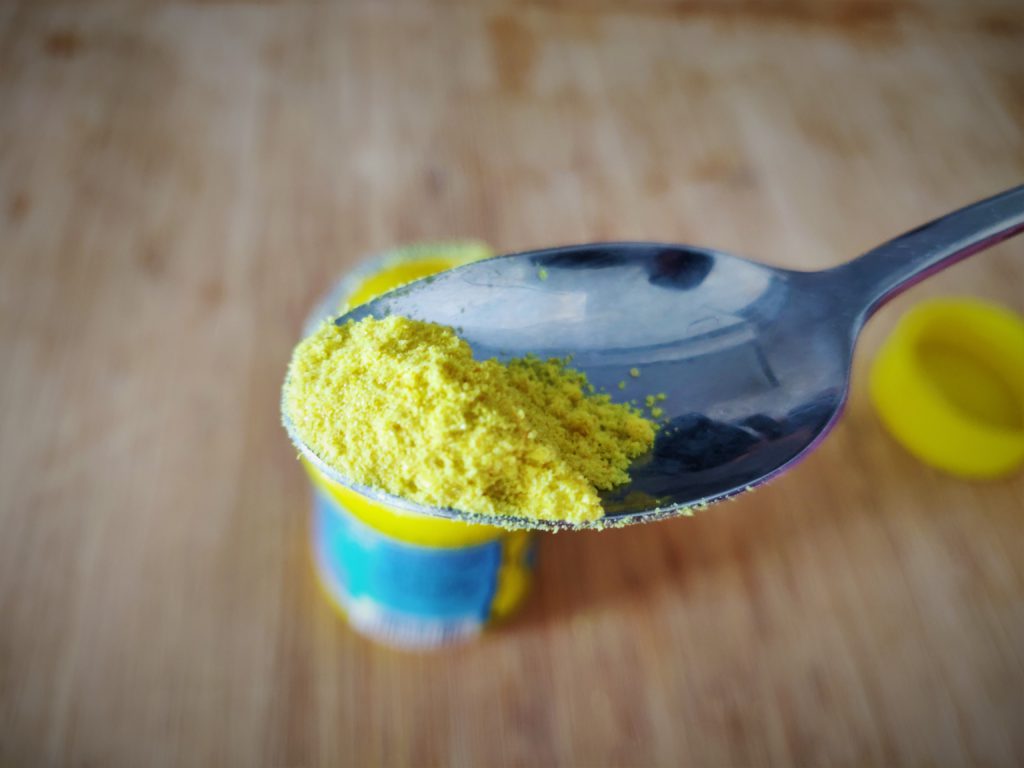- English: Asafoetida, Yellow Powder, Devil’s Dung
- Hindi: हींग (hīng)
- Bengali: হিং (hiṅ)
- Malayalam: കായം (kāyaṃ)
- Tamil: பெருங்காயம் (perunkayam)
- French: Merde du Diable
- German: Teufelsdreck
- Dutch: Duivelsdrek
- Afrikaans: Duiwelsdrek
- Swedish: Dyvelsträck
- Finnish: Pirunpaska, Pirunpihka
- Estonian: Juudavaik
- Turkish: Şeytan tersi, Şeytan boku, Şeytan otu
- Arabic: حلتيت
- Persian: آنغوزه
If you ever wonder why your Indian recipes do not taste like those in India, that’s because you lack one thing: Asafoetida. Asafoetida is the secret condiment that makes Indian food taste “Indian”.
Asafoetida is actually a dried gum extracted from the root of various species of the ferula plants, which are a part of the celery family.
Asafoetida is widely used in Indian cuisine, predominantly in the north, as a flavour enhancer. My Indian grocer told me “whatever you cook, add some yellow powder and it will be good!“. This tells you how much asafoetida is valued!
But be warned: asafoetida is extremely pungent – you see why it’s called the Devil’s Dung in various European languages. It smells like a really well-brewed fart that refuses to dissipate. Hence, it has to be kept shut in an air-tight container.
The smell and its flavour-enhancing properties slowly decrease with age, so a non-smelly asafoetida does not work as well as a fresh smelly one.

The History of Asafoetida
Before we talk about asafoetida, we need to get to know about a very similar ingredient called Silphium. Believed to be of the same family as asafoetida and like a giant fennel, silphium was widely used throughout the Roman world. Its uses were identical to those of the asafoetida today – as a condiment, medicine, and aphrodisiac.
Silphium was traded from the North African Roman city of Cyrene, although it predates Roman times, as archaeologists found it was already widely used among the Egyptians and Minoans.
On an expedition to Persia, Alexander the Great brought back a plant almost identical to silphium. Pedanius Dioscorides, a Greek physician, pharmacologist and botanist (40-90 AD) said both asafoetida and silphium are almost the same, although asafoetida was less tasty and smelled more vile.
But the over-harvesting of the wild silphium soon led to its extinction. Pliny the Elder, the Roman writer, said the last stalk of Cyrene silphium was given to the Emperor Nero.
But fortunately, asafoetida was still around. It was offered as a cheap substitute for the then-increasingly rare silphium. But by the fall of the Roman Empire, both silphium and asafoetida were largely forgotten in Europe.
Luckily, in its native habitat in Central Asia from Iran to India, asafoetida continues to be used until this day.

How can you use Asafoetida?
Asafoetida does not have to be used in large quantities. Half a teaspoon is enough to enhance the flavours of the spices you are tempering. Add asafoetida to the mix when you are releasing your spices in oil in a pan. Asafoetida cannot be sprinkled like fairy dust on your dishes. It has to be cooked in oil and takes around half a minute to fully dissolve into your dishes. Asafoetida is an absolute necessity when you are making dal, any dish with turmeric, or when you cook onions, cauliflower or potatoes.
Although asafoetida smells like fart, it actually gets rid of farts!
Asafoetida has been used for thousands of years as an anti-flatulent. Beans, lentils, cauliflowers are the vegetarian staples in Indian cuisine but are known to cause deadly fart bombs, an occasional undeserved punishment modern-day vegans inflict on family, friends and strangers.
Just a bit of asafoetida in every vegan dish will make vegans slightly better human beings and contribute to the fight against climate change.
Asafoetida is also widely believed to be a male aphrodisiac. According to unfounded gossips, asafoetida increases men’s libido and makes them constantly horny (as if they were not already). In India, it is a cheap household replacement for Viagra to help men against the occasional erectile dysfunction.
Indian propaganda claims asafoetida to be anti-carcinogenic. This has even less scientific grounds than it being an aphrodisiac. But honestly, it is too cheap to not worth the try.
Where to buy Asafoetida?
Asafoetida is sold in small airtight yellow containers, in every single Indian grocery store. If you don’t have an Indian grocery store where you live, you can get it easily and cheaply on Amazon or eBay.

